Rating index:
Extraordinary (96-100)
Outstanding (93-95)
Very good to Excellent (89-92)
Above average to Good (86-88)
Below Average to Average (80-85)
Avoid (below 80)
More info >
Extraordinary (96-100)
Outstanding (93-95)
Very good to Excellent (89-92)
Above average to Good (86-88)
Below Average to Average (80-85)
Avoid (below 80)
More info >
While The Fat Duck in Britain and elBulli in Spain were taking centre stage in the international gastronomic world in the mid 2000's, quietly the gastronomic equivalent of a "Wirtschaftswunder" was taking place in Germany. This "Wunder" started in 2004 (2005 guide) when Michelin appointed Joachim Wissler's Vendôme in Bergisch-Gladbach as Germany's sixth three-star restaurant. The next year (2006 guide) Christian Bau's Schloss Berg in Perl-Nennig was admitted to Michelin's top category and so was Sven Elferveld's Aqua in Wolfsburg in 2008 (2009 guide). Most impressive however, was the historic three-star hattrick in 2007 (2008 guide), with restaurants Amador (then located in Langen), Gästehaus Erfort in Saarbrücken and Restaurant Bareiss in Baiersbronn as the new laureates. Germany currently has no fewer than 11 three-star restaurants. See this link for a full list.
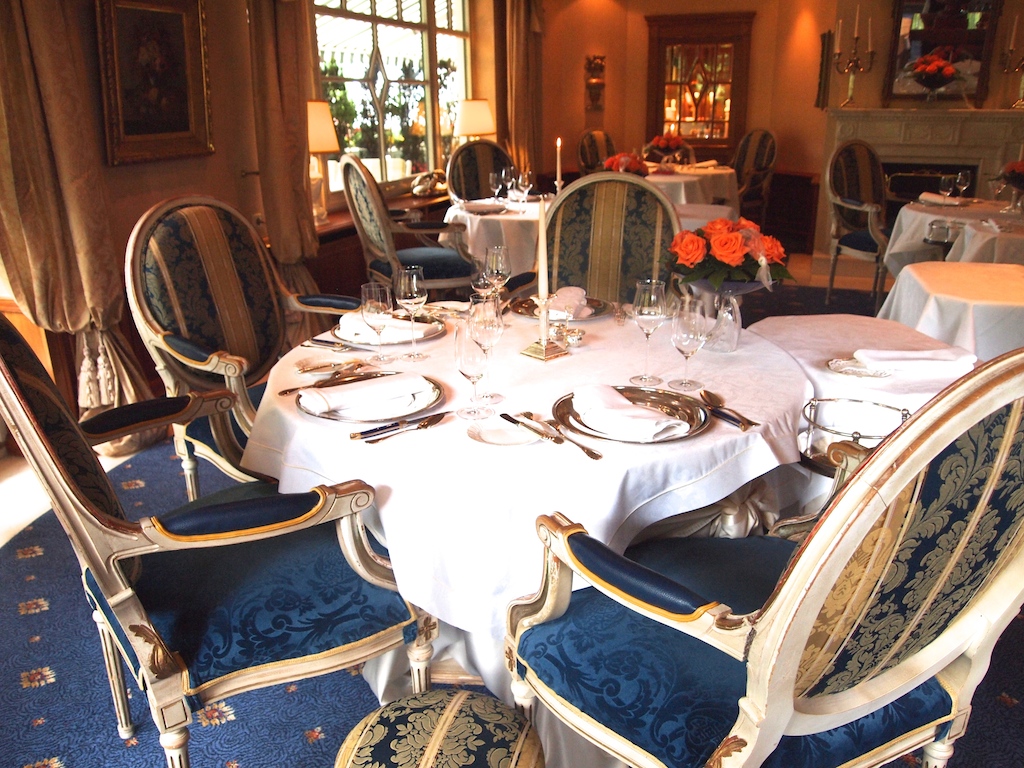
Where three chefs of these new three-star restaurants had at some point in their career worked at Restaurant Schwarzwaldstube in Baiersbronn, Claus Peter Lumpp (b.1964) of Restaurant Bareiss had followed a different path and spent the first years of his training (1982-1985) at 'the other place' in Baiersbronn, Bareiss (then called Kurhotel Mittaltal). Bareiss is a family-run destination hotel in the Black Forest, which apart from some 100 luxury rooms and suites, also houses several 'Stubes' and the fine dining restaurant called Restaurant Bareiss ('Bareiss'). Before returning as head chef to the then 2-star Bareiss in 1992, Lumpp worked at some of Europe's most renowned restaurants, including 3-star restaurants Le Louis XV (Alain Ducasse) in Monaco, Tantris (Heinz Winkler) and Aubergine (Eckart Witzigmann), both in Munich, and Antica Osteria del Ponte (Ezio Santin) in Milan. At Bareiss he succeeded Paul Mertschuweit, also known as "the tongue of Bareiss".
Bareiss is open for lunch and dinner Wednesday till Sunday. The restaurant offers a seasonal 4-course menu for €128, a 6-course 'Degustationsmenü' (tasting menu) for €168, an 8-course 'Degustationsmenü' for €210 and there's an à la carte menu. I had lunch at Bareiss with my husband and a friend on Friday 30 May 2014 and we all ordered the 6-course tasting menu.
To start there were nibbles (from top to bottom): Salmon sushi with black sesame seeds, a mini slice of leek tart with delicious buttery and crisp pastry and served with balsamic gel, then there was a saffron puff with a smooth guacamole filling and a crisp tartlet with a beef tartare and Parmesan cream filling. A fantastic start of this lunch.
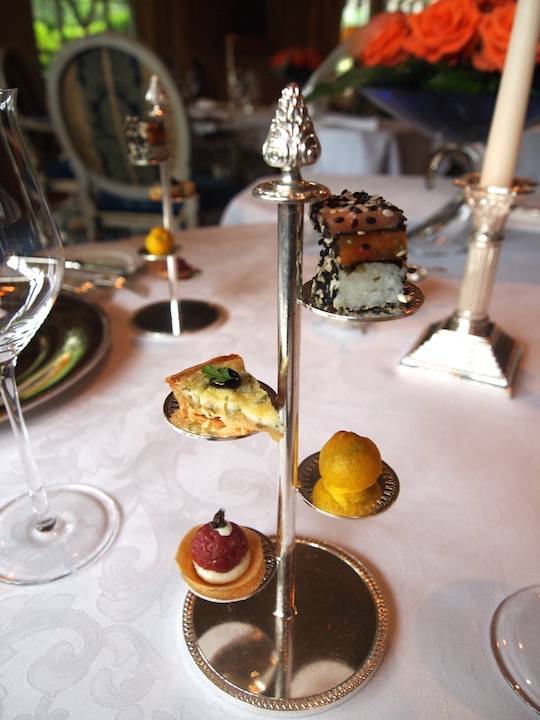
This was followed by two amuse bouches. First a small cup filled with a couscous, seasoned with lovely Middle Eastern spices, and topped with a yoghurt foam and some popcorn. Alongside this we were served a couscous salad, flavoured with fresh herbs and served with some baby corn, an elegantly sweet carrot puree, corn puree, and chive puree. Two very pleasing amuse bouches with well-judged flavour combinations; I particularly liked the crunchiness and nutty sweetness of the corn.
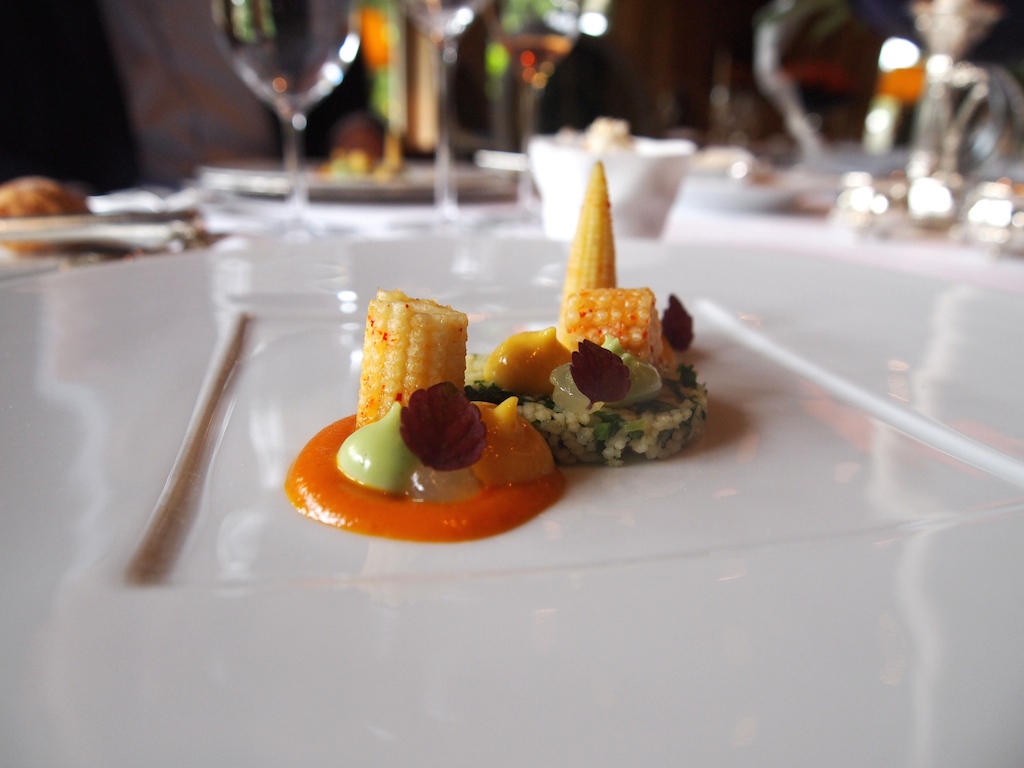
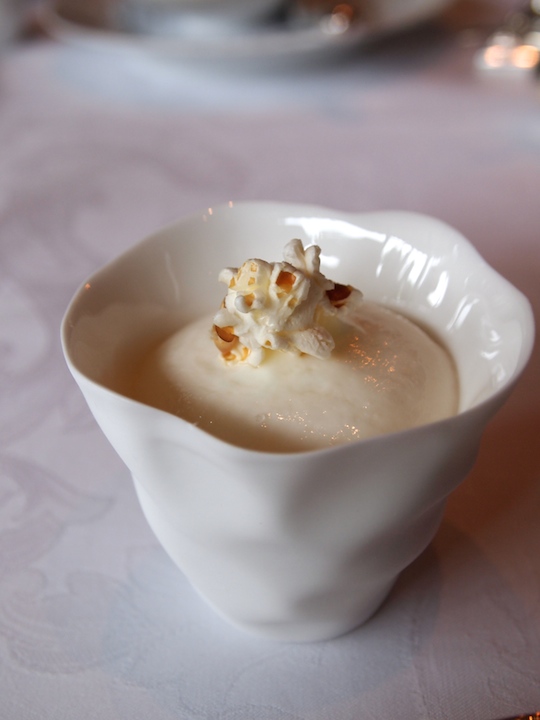
The final amuse bouche was a piece of tender and flavoursome spring plaice, perfectly paired with a silky smooth pea puree and a lemon vinaigrette. An elegant amuse bouche with a lovely balance between sweetness and acidity and I enjoyed the lemon zest notes in the dressing.
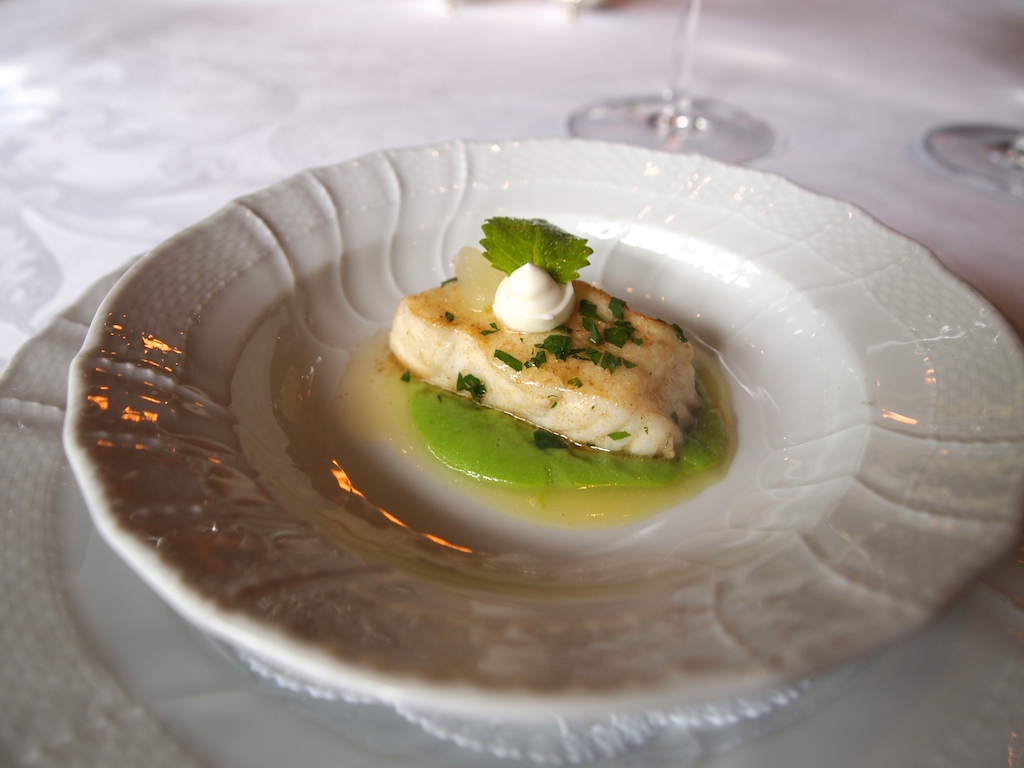
The first course of the tasting menu was Monkfish, spring herbs and marinated radishes. A piece of meaty and succulent monkfish, beautifully golden brown all over, and served on green herb puree, that was creamy in texture, but pure and clean in flavour. On top of the monkfish was a light radish and herb vinaigrette. To accompany the monkfish there were crunchy radishes (sliced, whole and marinated), small pillars of herb mayonnaise and white, sweet lemon lemon puree and a few wafer-thin croutons. Marinated monkfish tartare, topped with a thin slice of toast and an elegant radish sprout salad, was served on the side. Wonderful flavour contrasts, warm and rich on the one side, fresh, sharp and mildly bitter on the other; the mild bitters and pepperiness of the radishes balancing the richness of the monkfish beautifully.
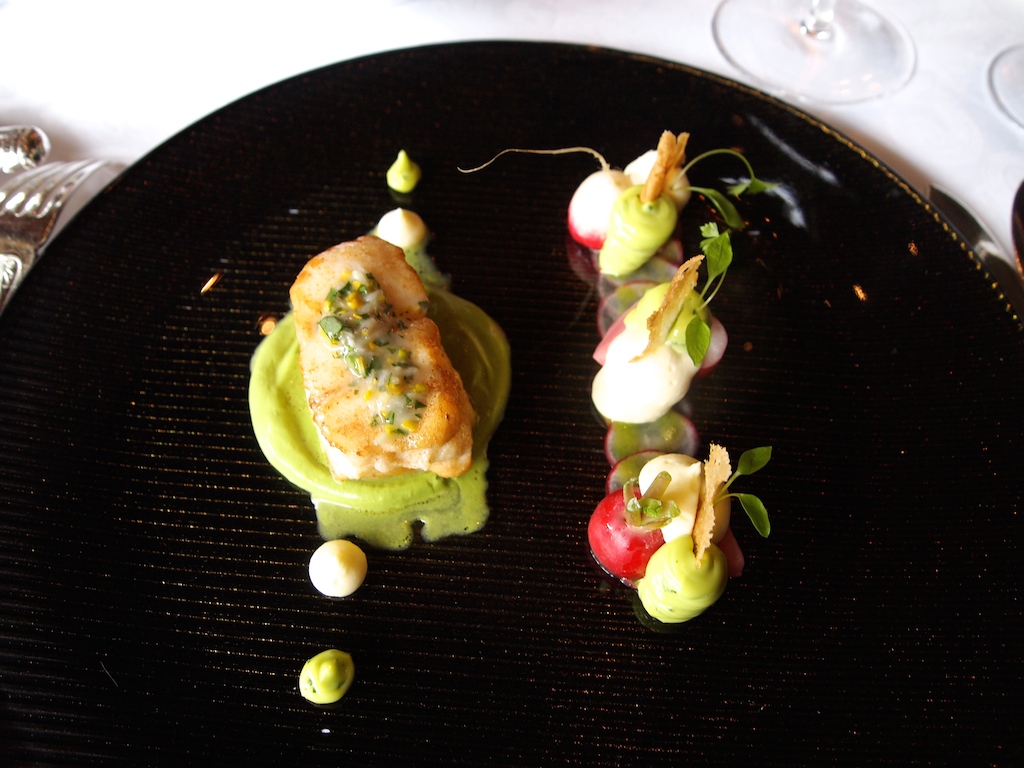
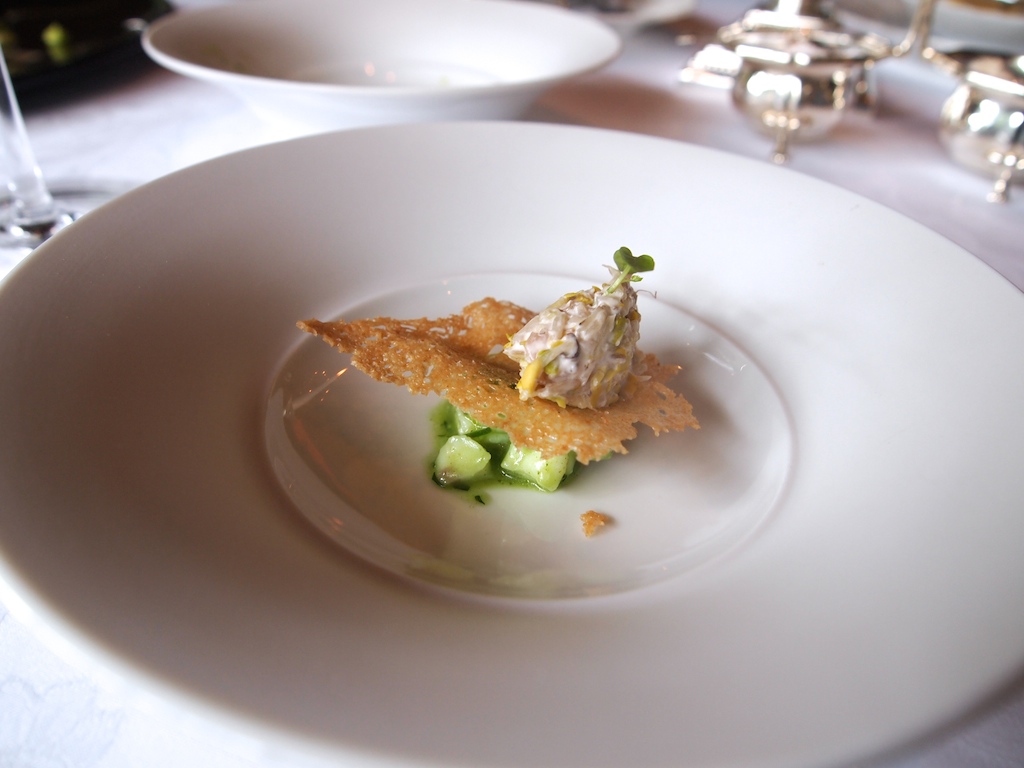
This was followed by a superb piece of seabass with an ultra-crisp skin and served with grilled fennel, a dark and rich red pepper ragout, a crisp fennel salad, some garlic mayonnaise, a terrific Pimenton de La Vera (smoked paprika) sauce and two dried black olives.� Both the smoked paprika sauce and the red pepper ragout had a great depth of flavour and their rich, smoky sweetness married well with the oily seabass. Equally good was the strongly flavoured garlic mayonnaise. Best of all though were the dried black olives, which turned out to be 'burnt' olives. First they soak the olives in sugar water and then they 'burn' them in the oven. This results in gorgeous, toasty and mildly sweet olives; it's like eating olive toast. A colourful and perfectly executed dish with complex flavours, that deliver a wonderful tension on the palate. I could eat this all day.
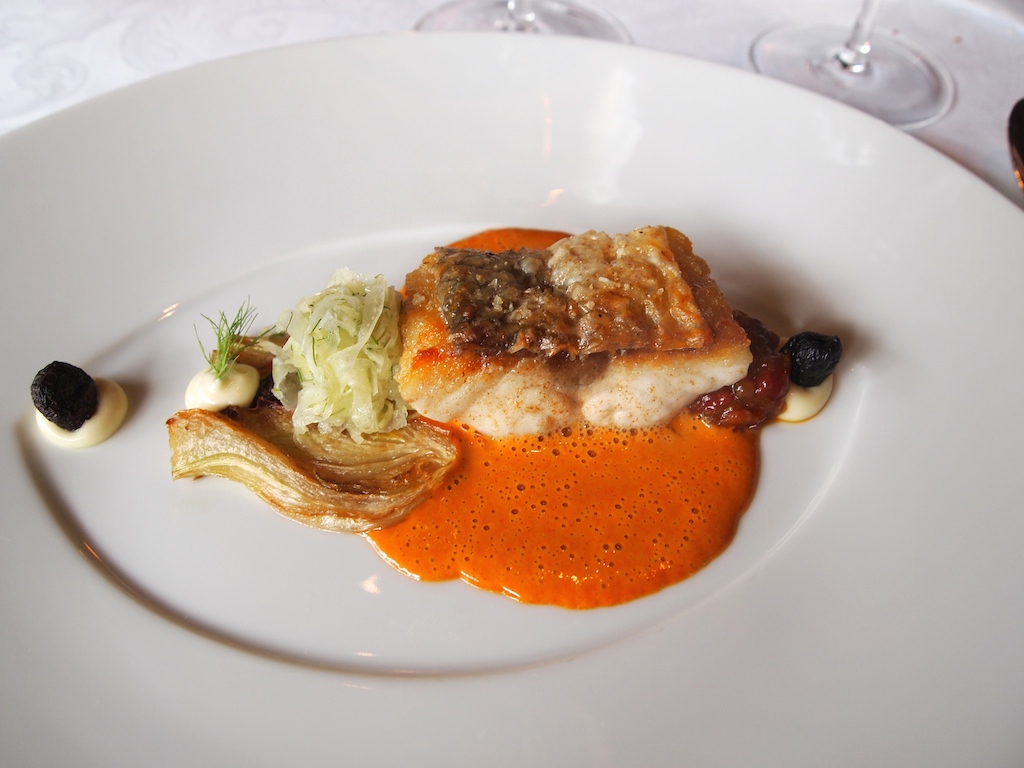
Third course was cod, cooked in olive oil, served with white asparagus tips and a creamy bearnaise sauce. The cod was lovely and moist and was covered with a buttery 'Polonaise' mixture of chopped egg and crunchy bread crumbs. A wonderfully refreshing salad of sliced white asparagus, cod tartare, chopped (skinned) tomatoes, and herb pancake rolls was served on the side. The dressing had lovely light citrus notes. A very intelligent combination: first you get the richness and warmth of the cod and bearnaise, that coat the palate, followed by the cleansing flavours of the salad. I also liked that only the tips of the asparagus had been used, as they have the most flavour.

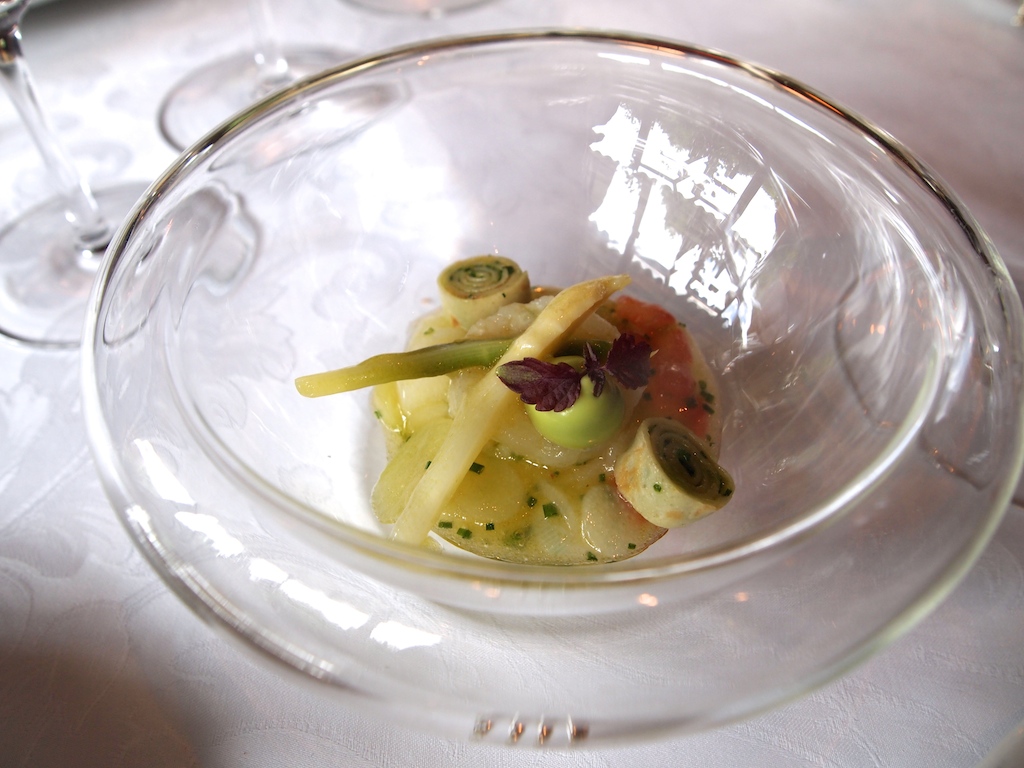
My main course was expertly cooked saddle of venison, served with a dark, well-reduced game jus, charred broccoli, broccoli puree, chanterelles, elderflower jelly, fluffly potato cakes, and a light foamy sauce, mildly flavoured with cumin. Alongside this came a venison (shoulder) stew with broccoli, mushrooms and cranberries. Last to arrive was a quite spectacular raviolo with a sweet and floral liquid elderflower filling. An exceptional main course with perfectly balanced, exuberant flavours. The venison (shot by Herman Bareiss himself in his own hunting grounds) was of stellar quality. Furthermore a technically flawless dish with hearty flavours, but presented in a graceful and refined way.
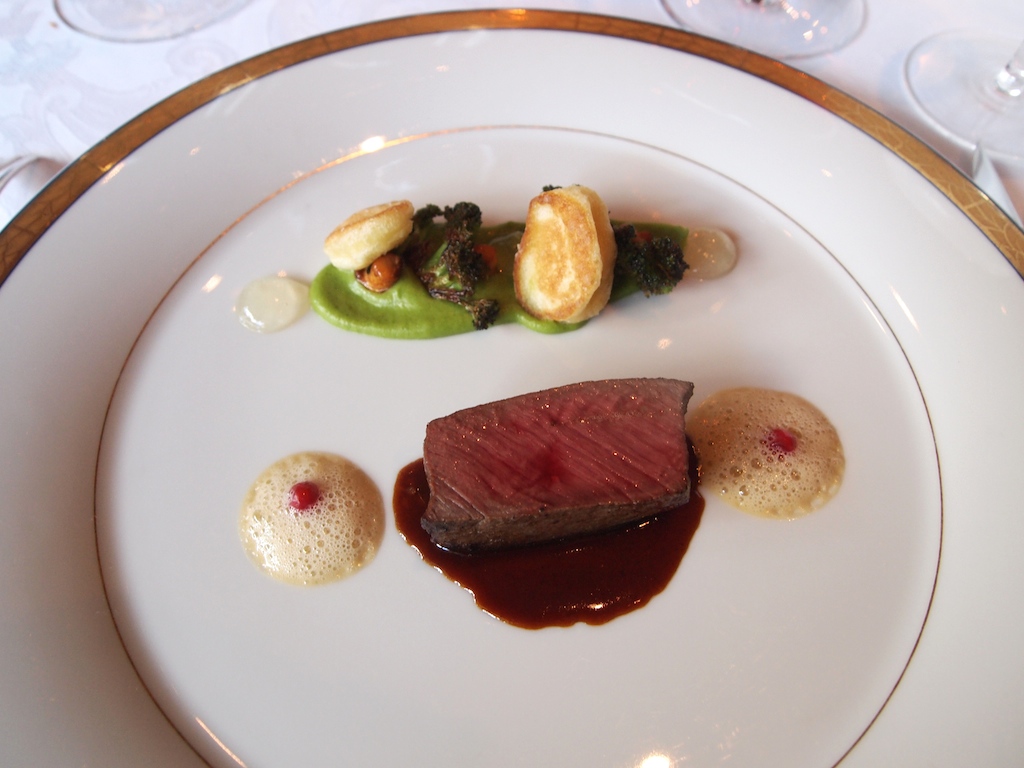
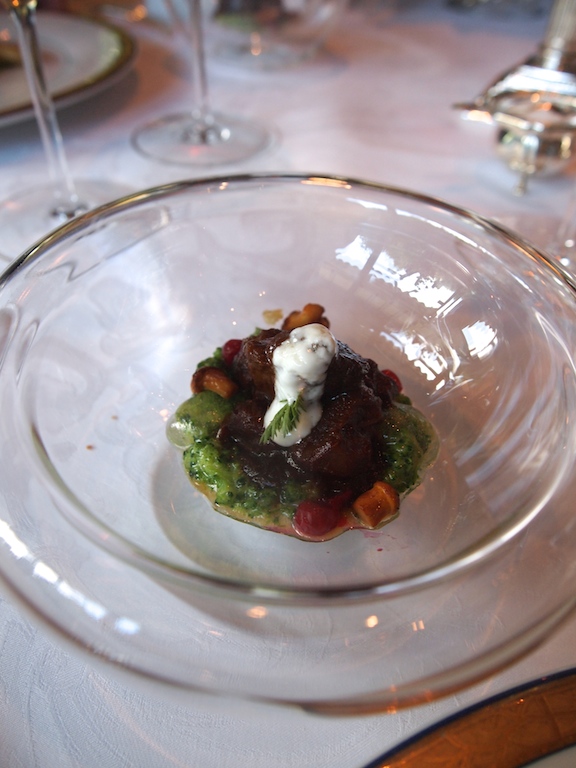
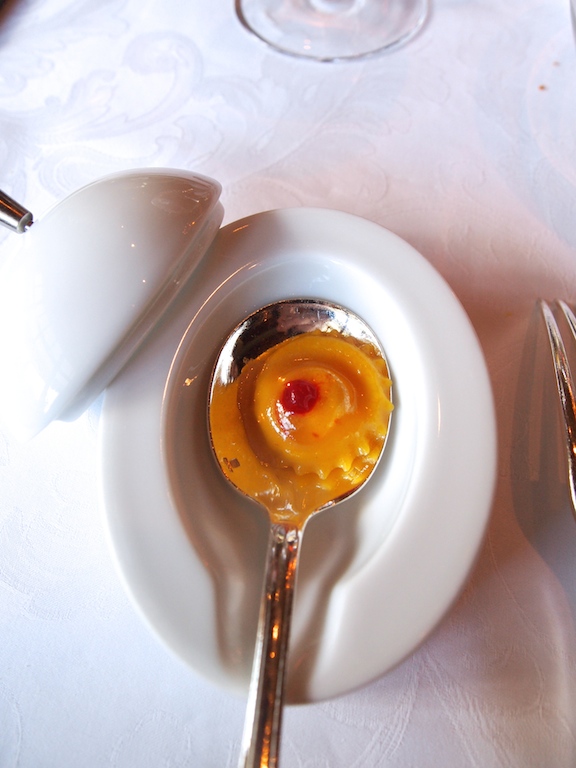
Time for the fifth course, cheese! Bareiss has a handsome selection of German and French cheeses, including now fewer than 12 hard cheeses.
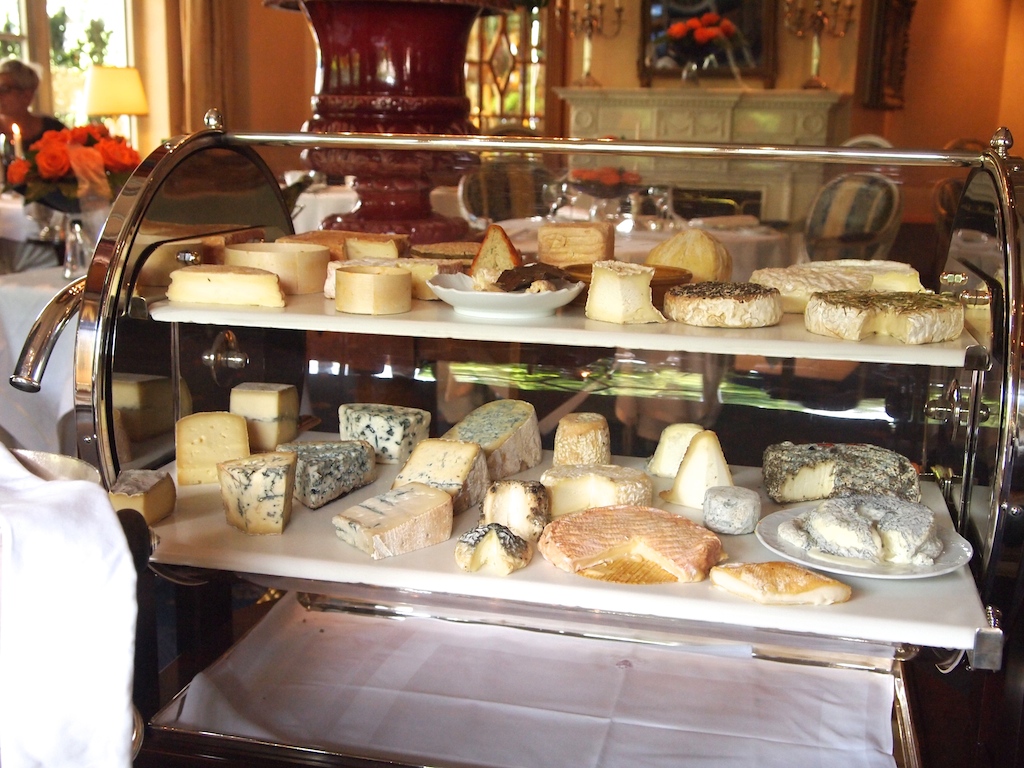
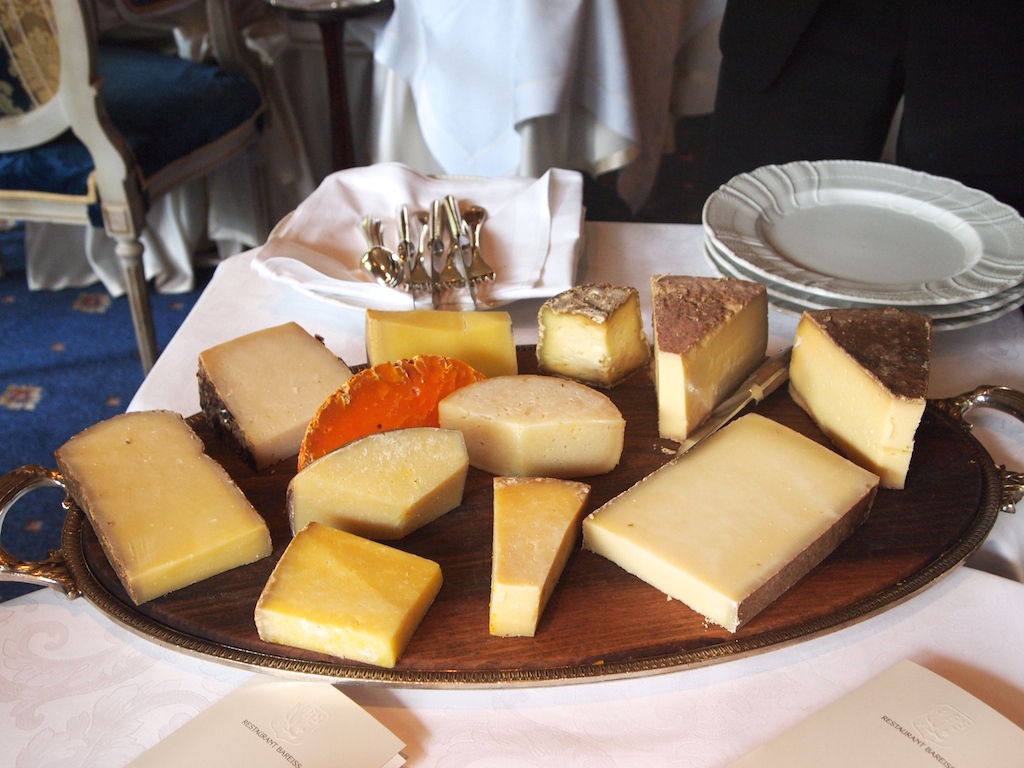
Dessert was a happy marriage of strawberry and mascarpone: creamy and airy strawberry mousse, marinated strawberries, a clean-tasting strawberry gel, vanilla-flavoured mascarpone créme, pistachio sponge cake and some delicious butter crumble. A beautifully light Grand Marnier cream with marinated strawberries was served on the side. A wonderful light and refreshing dessert with a pleasant sweetness to it.

A post-dessert sugar and chocolate extravaganza followed:
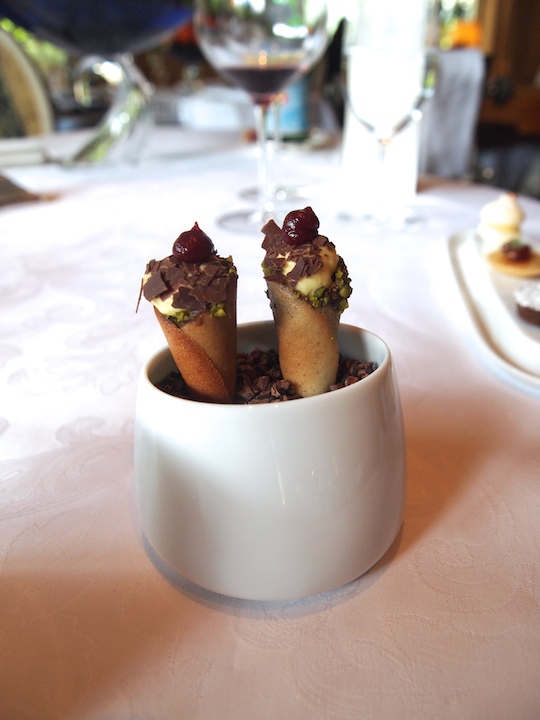
Black Forest Gateau cornettos
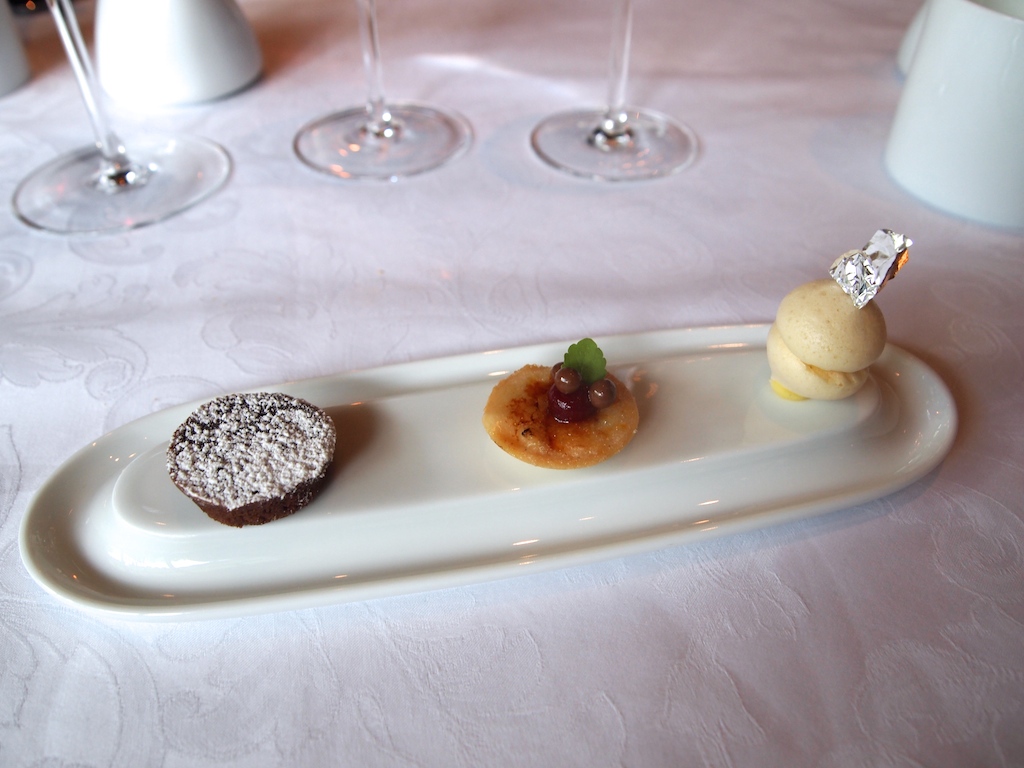
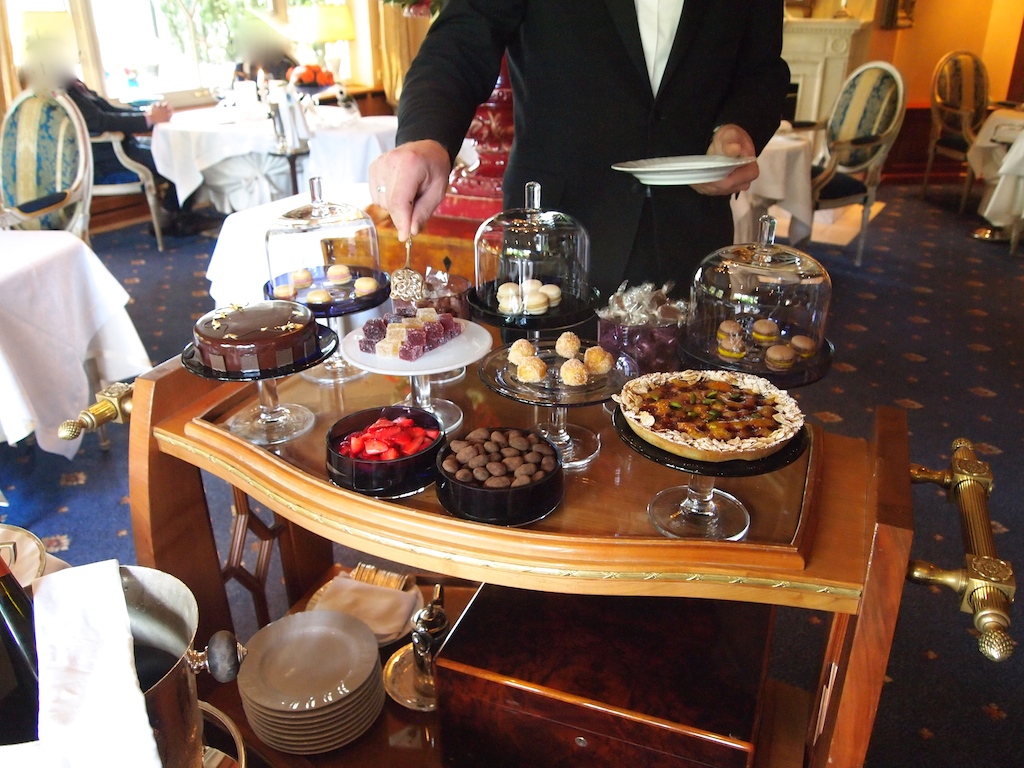
Homemade cakes (including a delicious cherry pie), macarons and other sweet delicacies.
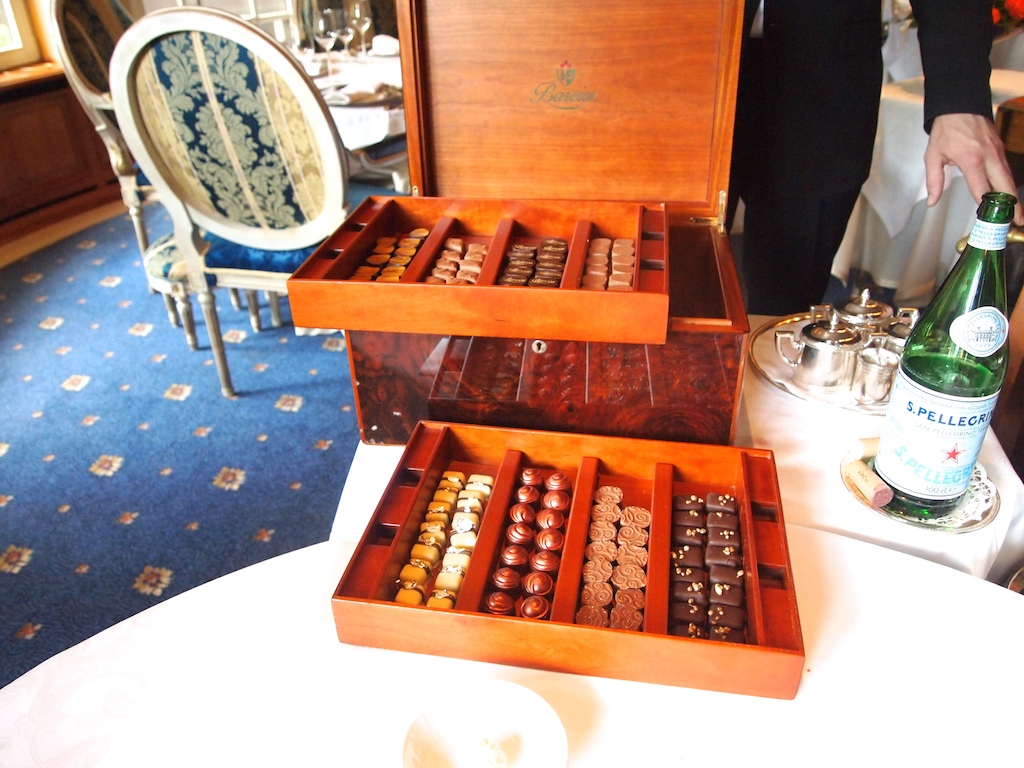
Homemade bonbons.
The ascent of fine dining in Germany in the last three to four decades started in the southern part of the country, in Bavaria and in the Black Forest. In 1993, the New York Times already reported about Baiersbronn as a culinary destination and about Bareiss and the Schwarzwaldstube as its leading restaurants. The middle and northern parts of the country only caught up later on, in the last 10-15 years or so. Is this perhaps a reason why (generally speaking) the top restaurants in the south seem slightly more conservative in their cooking style than those further north? Is this an example of the dialectics of lead, or is it also a cultural thing? Germany may be an 1871 Bismarckian invention, but (say) Bavarians and Schleswig-Holsteiners have less in common than you might perhaps think.
Whatever there may be of these musings, Claus-Peter Lumpp's neo-classical cuisine is firmly rooted in the French classics and in Southern German culinary tradition. It focuses firmly on the quality of the ingredients and of the flavours; presentation comes second. In that sense, he puts substance before style. The flavours are often powerful, with sometimes striking contrasts and daring combinations, but Lumpp always manages to achieve a harmonious synthesis on the plate. With the exception of the odd sponge or gel, the techniques are classical but not less intricate; the dishes are never overly complicated but that does not make them less profound. There is real tension and excitement in the carefully designed, detailed dishes and even if Lumpp may not be trying to reinvent the wheel, there are lots of interesting, creative touches. The execution is flawless and the dishes have a real personal imprint. Bareiss confidently occupies its individual spot among the very finest German restaurants.













